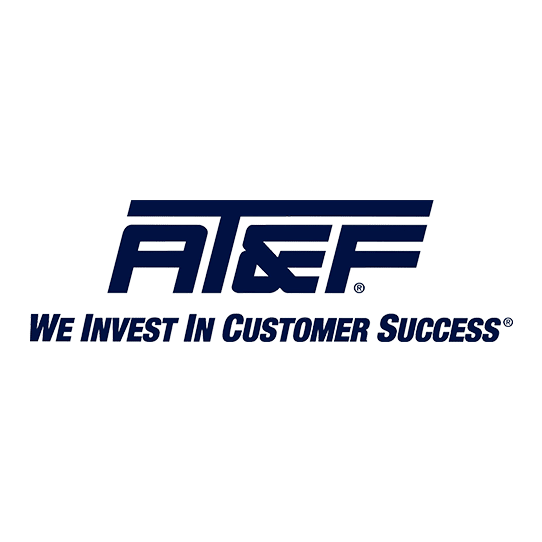Transitioning power to next-generation leadership in a company is an imprecise process. It involves many actions over a period of time that are intangible, yet very real. “Power” is not a title or a corner office. It involves qualities like respect, authority, and influence. Power is about the relationships that can make or break a business – relationships with long-time employees, vendors, and customers.
When the CEO who built those relationships, and, hence, the company’s success, decides to step aside, transitioning the power that surrounds his or her relationships is a process that must be carefully managed.
Family Business Transition
In a family-owned business, the older generation may assume that younger family members will naturally want to run the company someday. That may not be the case. Have a talk – or perhaps a conversation that goes on for several years – with your child or children about whether they envision themselves in the family business. Remember, things change. Young people often try out different paths before settling into one that feels right. So, just because your college student doesn’t plan to come home and run the company right now, he or she may feel differently in a few years after working for someone else.
If younger family members want to be involved in company leadership, expose them at an early age to the company’s operations. Let them get their feet wet and build an understanding of how your company makes money.
Learning the ropes by driving a forklift in the warehouse has many benefits, not the least of which is building relationships with your employees. Employees are going to watch your next-gen leader on the job. If they see a young person who works hard and is willing to learn, they will respect him or her. So, a strong work ethic is a key to building relationships internally with the employees who have helped make the company successful.
A young person who gets involved in every function of the business and builds strong institutional knowledge will be better positioned when it’s time to take the reins. They may also see where things could be done differently to improve the company.
Continuous education and training, whether in targeted seminars or multi-week education programs, is an essential part of the transition. The more knowledge and education a next gen leader gets, the better. Moreover, employees will respect the fact that their future boss is receiving an education that can help improve the company. Investing in education and training – including leadership training – will take your organization to a higher level.
If your next gen leader worked at the company as a teen, then went off to college and worked for another company before deciding to come home and assume leadership of the family business, a different process for transitioning relationships should be envisioned. He or she may not work in every department of the company to prepare for leadership but will bring experience and perspective gained elsewhere. In the end, the result must be the same to be successful – building good relationships and earning the respect of employees, vendors, and customers.
A Seat at the Table
Relationships and institutional knowledge are key to the power shift. The best way to do achieve them is to have the next-gen leader involved in meetings and discussions with the people who are critical to the company’s success. This means senior management meetings, employee group (or union-management) meetings, and meetings with key advisors, vendors and customers. Your next-gen leader must be at the table for two to three years before the leadership transition takes place.
Giving the young leader a seat at the table yields several benefits, including conveying the message to employees, advisors, vendors, and customers that you have a strong succession plan, as well as encouraging your next gen leader to take ownership of these key relationships. These are the people who can help him or her navigate through the transition and many business issues that may arise down the road. Having a strong relationship in place before the transition will help.
What does all this have to do with transitioning power? “Power” is nothing more than relationships. It reflects how a person is perceived by others – in this case, employees, advisors, vendors, and customers. By enabling your next gen leader to build strong relationships in the years leading up to the transition in leadership, you will put in place the building blocks for long-term success.
Contact your Barnes Wendling advisor to start the discussion about how you can enable your next-gen company leaders to be successful.
Related Insights
Featured Post

Featured Client Testimonials
BW is a true partner to us. Their knowledge, expertise, and service are a valuable resource to us and play an important role in our success!
John Allen - Vice President of Finance, Kaufman Container

Featured Client Testimonials
I appreciate the exceptional tax advice we received over the years. The (BW team) has a good grasp of our business needs. Thank you for your excellent service.
John Griffiths - Owner, Rae Ann, Inc.

Featured Client Testimonials
Barnes Wendling has been our company accountants for over seven years. Their knowledge has been instrumental in helping us grow strategically during this time. And although we’ve seen many changes in our economy that we cannot control, we’ve always been able to trust the Barnes team to be by our side. The Barnes team feels like family. We can’t thank them enough for their support!
Christine Kloss - Controller, AT&F

Featured Client Testimonials
Barnes Wendling has been our company accountants for over 15 years. During this time, the business has grown exceptionally, and Barnes has kept pace, providing accurate, quality advice. Our finances are more efficient than ever, and the expense of hiring Barnes has been a definite positive add to our bottom line. I give my highest recommendation to their firm.
David Miller, MD - President, Retina Associates of Cleveland

Featured Client Testimonials
Barnes Wendling has provided us guidance and recommendations that have strategically helped strengthen our business and position ourselves for growth. We needed to hire a new VP of Finance and Controller this past year, and they were instrumental in helping us find the best candidates for our company.
Sara Blankenship - President, Kaufman Container

Featured Client Testimonials
We value the trust, accuracy of information, and reliability of Barnes Wendling and Mike Essenmacher personally. Mike has been instrumental as a trusted advisor on accounting, tax, and personnel issues. His advice is always accurate, and he is very reliable. His associates are also very talented.
Dominic Ozanne - President and CEO, Ozanne Construction Company

Featured Client Testimonials
We value Barnes Wendling’s expertise with all things accounting so we can operate our business using our strengths and allowing them to be our experts. They have also brought me a few business sale opportunities to allow me to grow my assets.
John Gaydosh - President and Metallurgical Engineer, Ohio Metallurgical Service

Featured Client Testimonials
Barnes Wendling (especially Lena) did a great job with our financials. Everything. It is extremely refreshing and comforting to know that all of our numbers are not only correct, but they are in the right place(s). Your diligence and reporting truly does make me (personally) feel better.
Thomas Adomaitis - Controller, Bialosky Cleveland

Featured Client Testimonials
I can wholeheartedly tell you that I have yet to work with an audit or tax team that have been more helpful, easy to work with, and committed than the team at Barnes Wendling- I have been through three different firms in the last few years.
Michelle Saylor, Former Controller, Aero Mag

Featured Client Testimonials
Floyd Trouten at Barnes Wendling CPAs is an “expert’s expert” when it comes to M & A accounting. Not only does he understand the evolving details of the Tax Code but he also sees the fine points of their application for owners, managers, investors, and financiers.
Mark A. Filippell, Western Reserve Partners

Featured Client Testimonials
The service is amazing at Barnes Wendling CPAs. The benefit is worth more than the cost. Sometimes it’s true that you get what you pay for.
Mark Boucher - Former Owner, Castle Heating & Air









